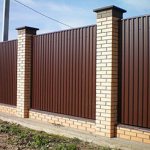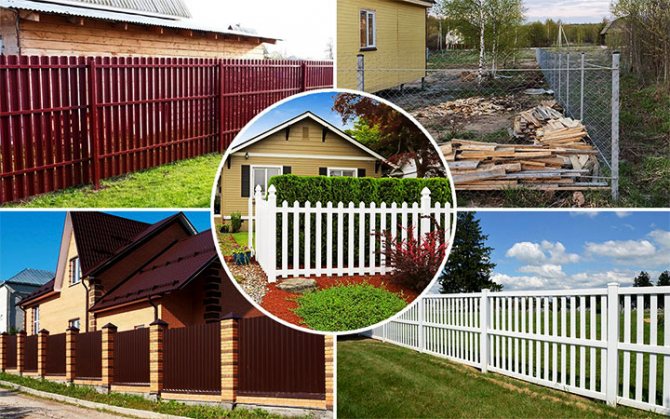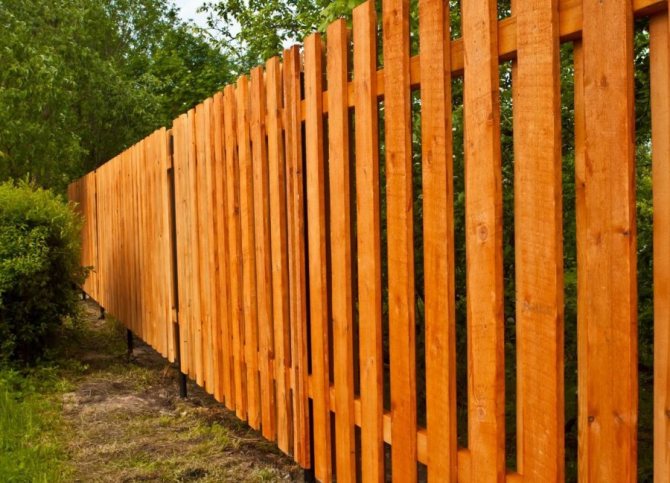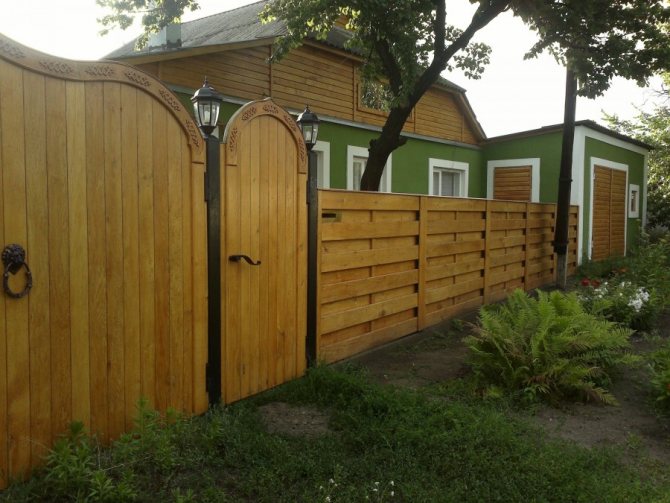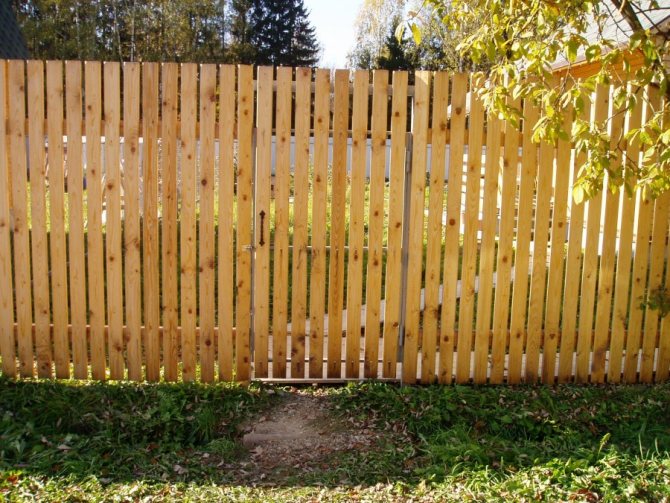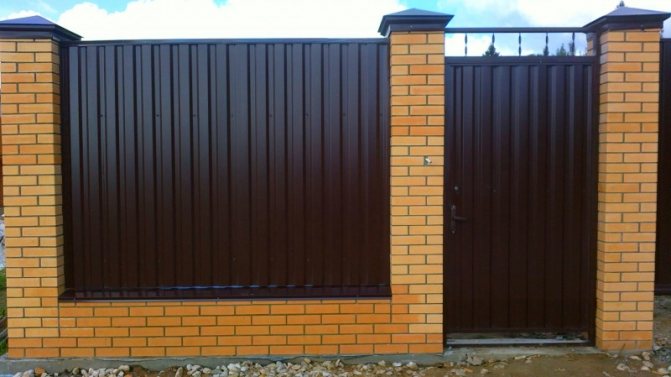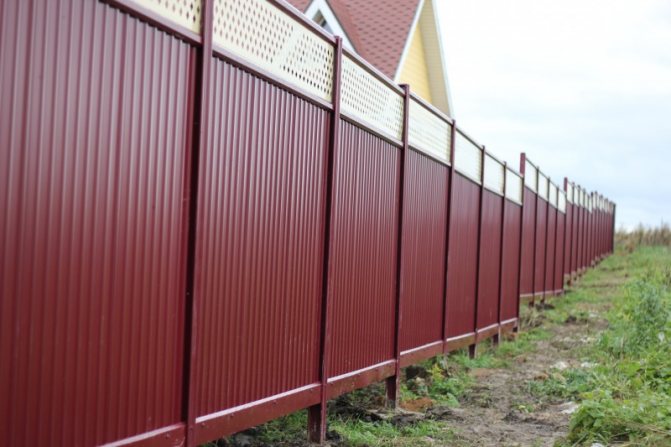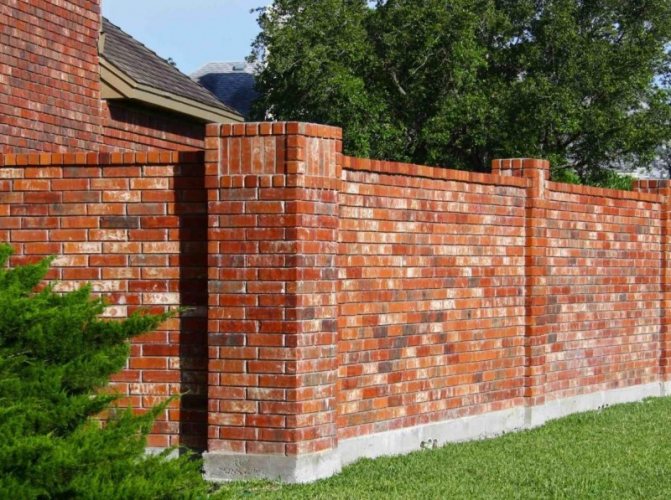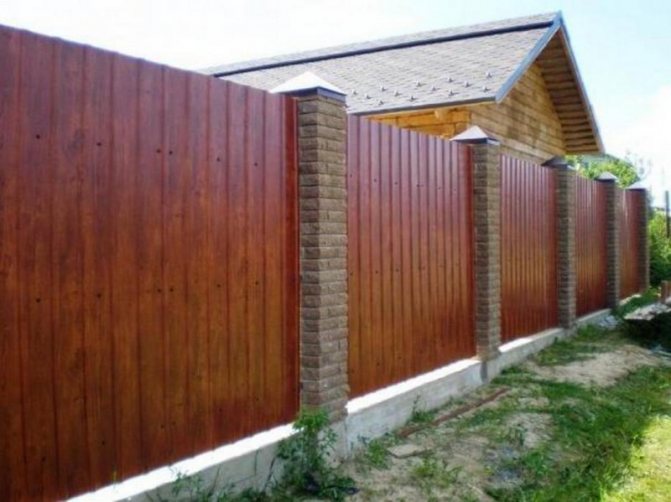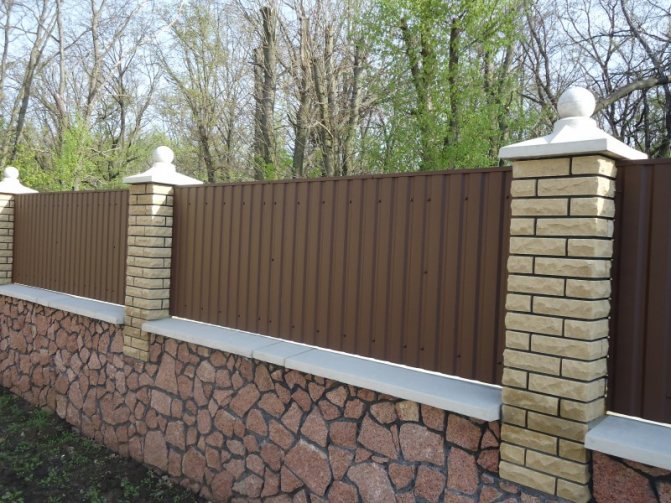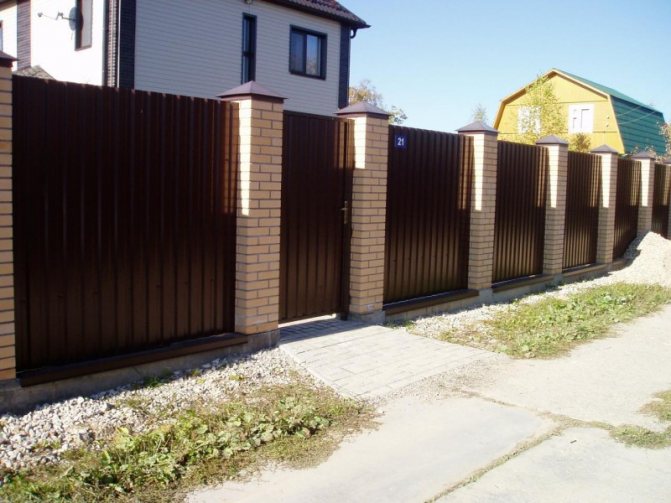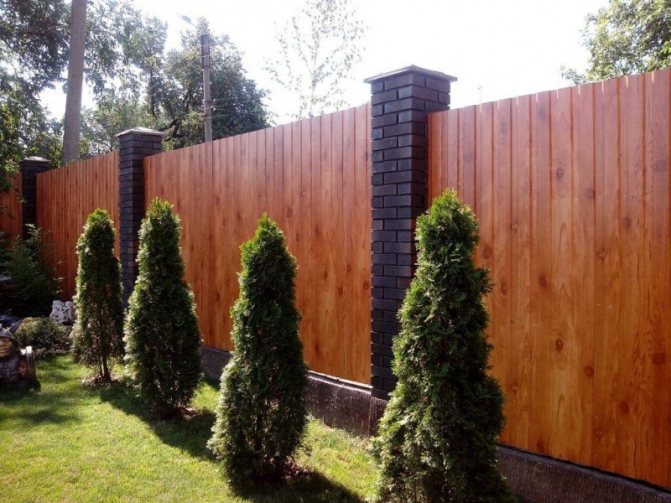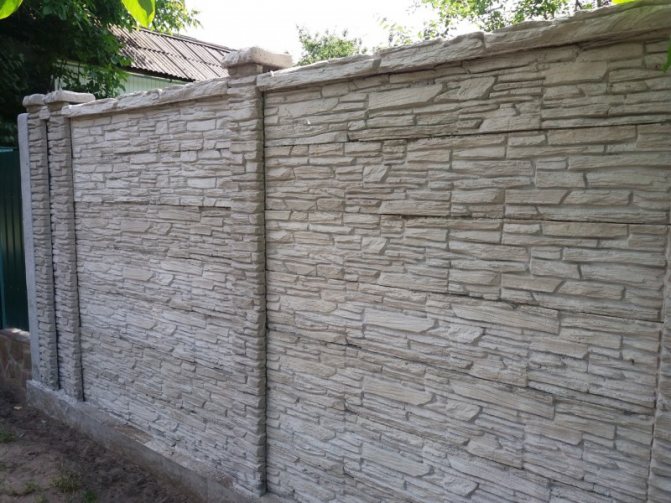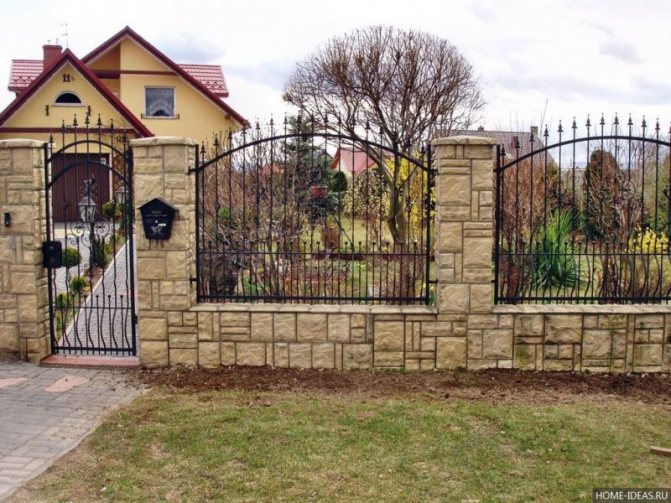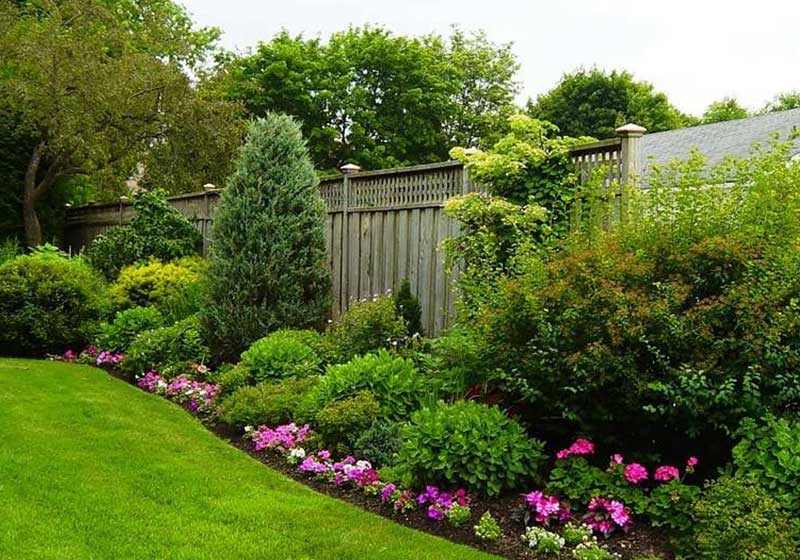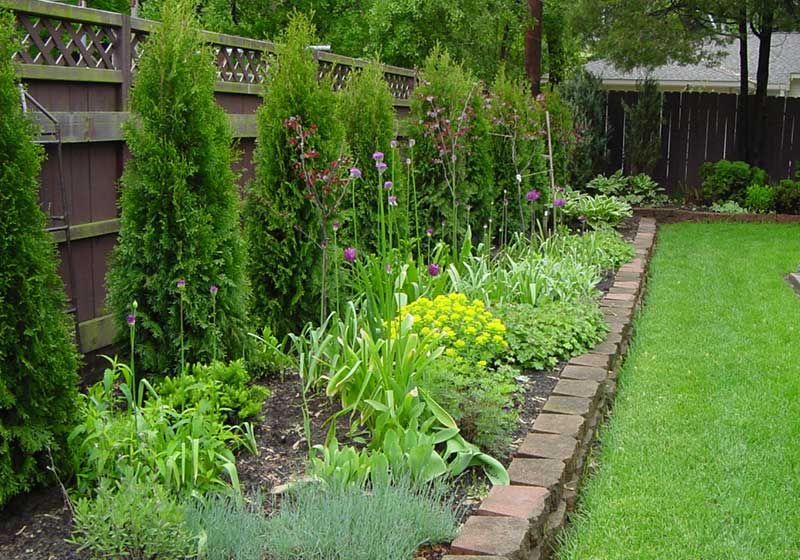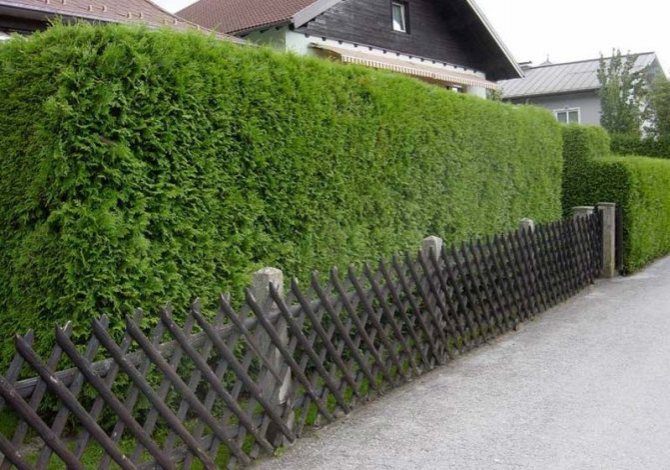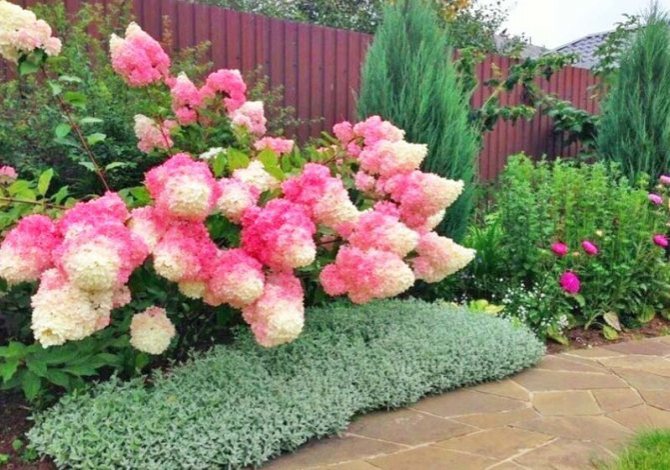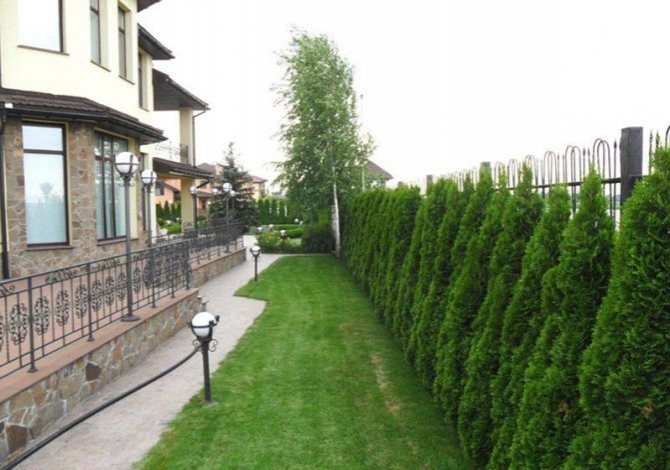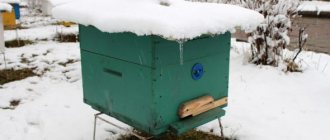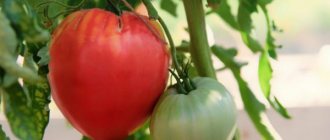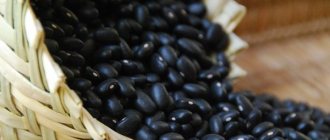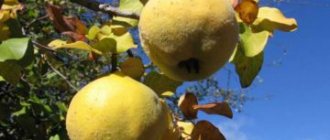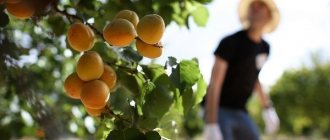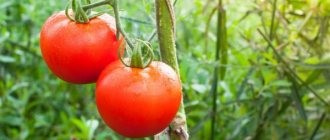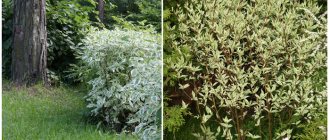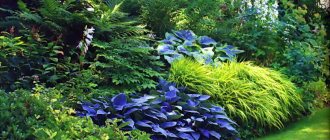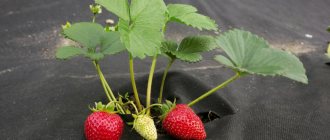The land plot, regardless of its purpose, must have a fence.
It is useful for the owner to know what it can be made of and what advantages this or that material for the fence has.
This article will present the most popular options, as well as their comparative characteristics.
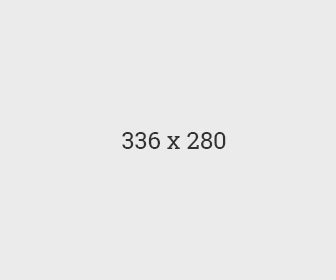
Fence materials
The type of fence should be chosen taking into account what objects are available on the site. If it is a garden or vegetable garden, the most inexpensive hedge option will do. If there is a house on the site, the material of the fence should be in harmony with it.
But before you focus on the material of the canvas, you need to decide what the support pillars will be - an indispensable element of any fence. There are three options to consider.
Wooden beams
These poles will be the cheapest. In addition, it is easy to attach something to them - to drive a nail or screw, you just need to have a hammer and an ordinary drill.
However, you need to be prepared for the fact that in the conditions of the street, wooden racks will not last long, since wood, even after processing with the most modern protective compounds, quickly becomes unusable under the influence of external factors and a biologically active environment. The poles will have to be changed in just a few years.
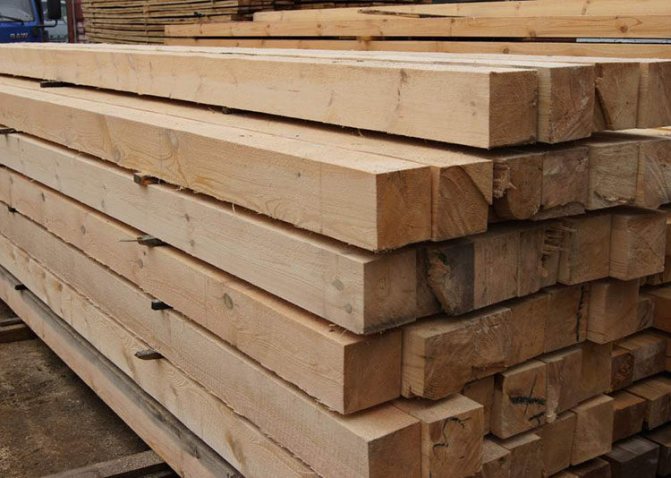

Wooden beams
For the manufacture of wooden racks, they take a bar with a section from 60x60 to 100x100 mm. Having trimmed and sanded, it is impregnated with an antiseptic, with effort rubbing the latter into the pores with a brush. The above-ground part of the pillar is protected from moisture by painting, for which alkyd enamel is best suited.
The buried part needs more effective waterproofing: it is coated with tar, bituminous or polymer-bitumen mastics, or wrapped with roofing material (fixed with a construction stapler). To exclude the possibility of rotting, it is useful to burn this part of the pillar.
Moisture is absorbed especially easily through the end of the timber, so it is advisable to close it on top with a plastic or tin plate.
Steel pipe
Comparing a steel pipe with a wooden beam, it is easy to notice the following disadvantages:
- working with it is more difficult, since you will need electric welding;
- the cost is higher.
But there are also significant advantages:
- higher strength;
- long service life (with timely renewal of the paintwork, it will stand for decades).
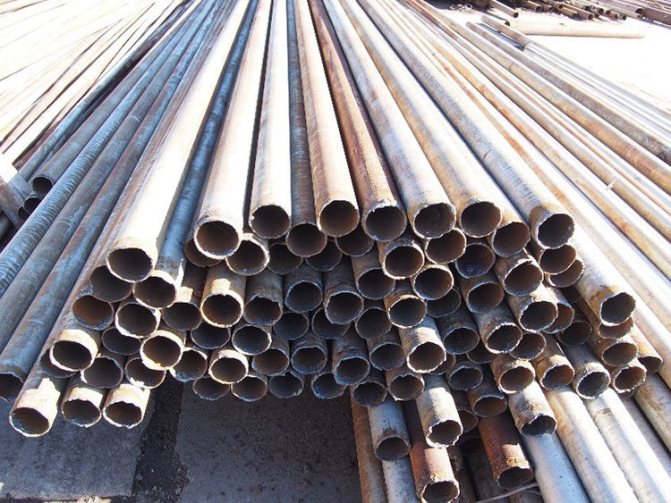

Steel pipes for the fence
The pipe can be used both round and square. Since such a post is placed for a long time, it is better to concrete it.
Brick or stone pillars
In fact, this is the same steel pillar, but lined with brick or stone. To fix the sections, mortgages are embedded in the masonry, which are welded to the steel pipe located inside.
A tin, plastic or concrete cap is installed on top to protect the masonry from precipitation.
A stone or brick post is the most expensive option. Moreover, not only the aboveground, but also the underground part will be difficult and expensive in construction: a foundation with dimensions in plan slightly exceeding the dimensions of a brick shell will be required.
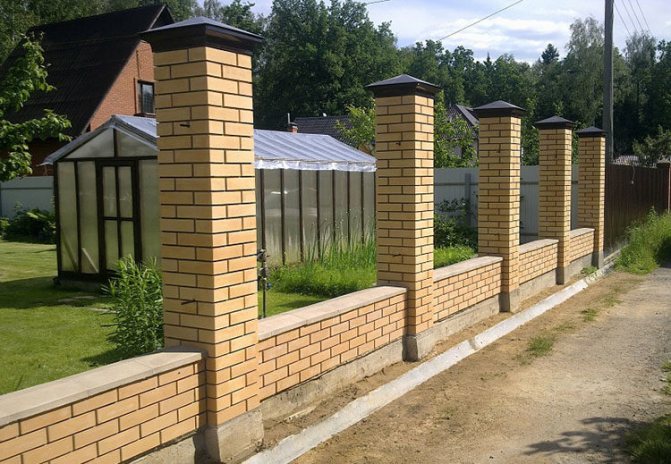

Fence with brick pillars for summer cottages
But on the other hand, a fence with such supports immediately takes on a solid and solid appearance, even if the canvas is just an ordinary picket fence. In the best way, a forged fence, or built of the same stone or brick, is combined with brick and stone pillars.
A durable fence must be made of durable materials. A concrete fence is one such option.
The procedure for installing a brick and corrugated fence is described here.
A fence made of gabions is not so common. However, such a fence looks very unusual. We will tell you in detail about the pros and cons of such constructions in this publication.
Construction of a picket fence
After preparing all the elements of the fence, they start building the fence:
- In the places designated for the supports, they dig a hole with a shovel or an earth drill. Sand and crushed stone are poured onto the bottom for better moisture removal in a layer of up to 5 cm. The support is lowered strictly vertically into the pit, covered with broken brick, stones, soil, tamping tightly.
- On the pillars, the points of attachment of the crossbars are marked, which are located strictly horizontally. They are nailed or screwed using a screwdriver.
- Vertical strips are attached to the veins in the same way.
- It is recommended to cover the finished fence with a primer, then varnish, paint. If left uncoated, the service life is reduced.
What are the sections made of?
To answer the question posed, you must first of all decide whether the canvas will be solid or not. The solid has an important advantage: it does not allow outsiders to see what is happening behind the fence. But there are also disadvantages:
- On the southern side of the site, the vegetation along the fence will be in the shade. The shaded area will be large enough, because a solid fence in order to make it really obscure, you have to build higher than human height (at least 2 m).
- The wind acts on a solid fence with maximum force, and with a forced increase in height, the windage also increases.
If a strong wind often blows in the construction area, then during the construction of such a fence, additional measures will have to be taken (except for stone and brick):
- the fastening of the pillars in the ground is made more durable: they are deepened more deeply and must be concreted;
- under the canvas, a shallow strip foundation is arranged, to which it is attached.
Obviously, the viewed fence is much easier and cheaper to build: it does not need to be made high and the wind acts on it with much less force. So if you are ready to put up with the curious glances of passers-by (for the summer period you can hide from them with thickets of grapes), then you should opt for such a hedge.
Now let's see what kind of materials can be used to form the canvas.
Concrete blocks
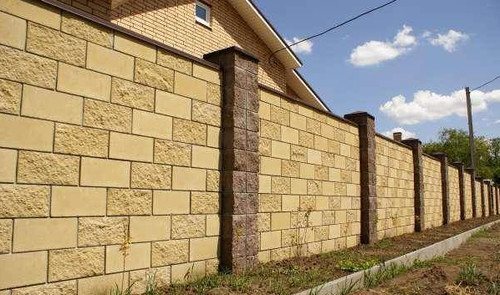

Fencing made of concrete blocks If you make a fence from two elements, concrete pillars and blocks, then it will last longer than the cottage can stand. This is a symbol of inaccessibility and reliability. The main advantages of concrete include:
- Simple and fast assembly.
- High resistance to all kinds of influences.
- It can be built on any ground.
- There are many options for block designs. Their sizes may also vary.
- Durability.
And now a few disadvantages:
- The high cost of construction.
- The area will not be sufficiently ventilated.
- To do it, you need to involve construction equipment.
- If the manufacturing technology is not followed, the fence may warp after the winter season.
Wooden fence
This name hides a rather motley family of hedges. The following set of advantages is common to them:
- the fence can be either solid or viewed;
- the construction process is simple, since wood is easily processed;
- in the countryside, a timber fence is always the most appropriate and looks very colorful;
- due to its low weight, no foundation is required;
- the cost of materials is quite affordable.
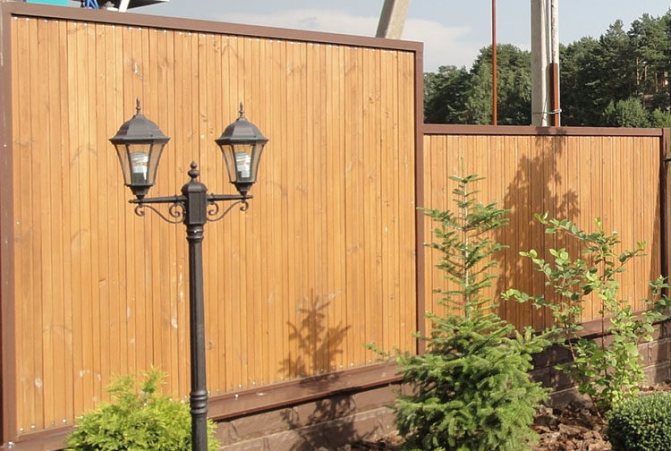

Wooden fence
The disadvantage is that such a fence requires constant care and at the same time it still cannot boast of a long service life.
The following types of wooden fences can be distinguished:
Wattle
For a wattle fence in a classic design, the material - willow vine and poles - can be obtained on your own, so such a fence is free. True, they cannot protect an expensive cottage due to its not too presentable appearance - only a vegetable garden or a home ownership deliberately decorated in country style.
There are also more durable varieties of wattle fence, when not a vine is woven, but poles and even boards. Weaving can be both horizontal and vertical.
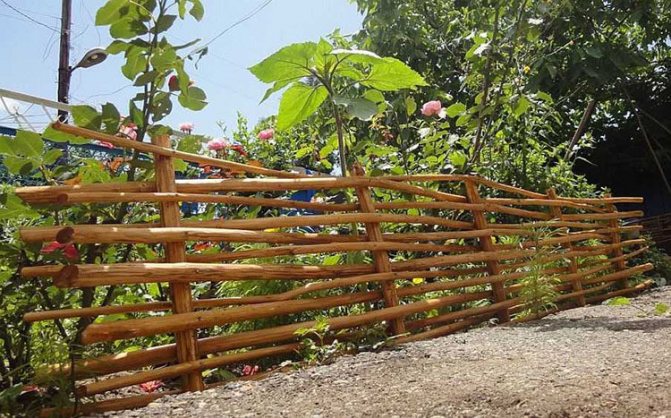

Do-it-yourself fence fence can be made from thick branches
Today, many manufacturers produce a polymer vine - a polyethylene tube, which with its outer surface imitates a real vine. Additionally, you can purchase everything you need to build a fence - from racks to a wicket with a gate.
It is not necessary to weave a fence from a polymer vine yourself - you can purchase ready-made sections that will only have to be attached to the racks.
Fence
This is the most common type of wood fence. The canvas consists of vertical strips 50 - 100 mm wide and 20 mm thick nailed to two horizontal veins with a certain gap.
Since the canvas is still viewable, a height of 1.5 m will be sufficient.
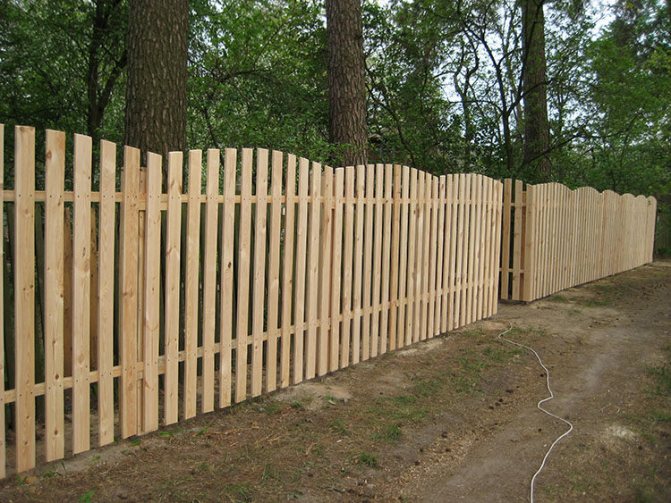

Fence
Solid wood fence
The same picket fence, only the slats are laid without a gap.
Slab fence
It can be either solid or in the form of a picket fence. We singled it out into a separate group due to the peculiarities of the material: the slab, which is a rounded sidewall of the log, is, in fact, waste from the woodworking industry. Accordingly, they give it away very cheaply.
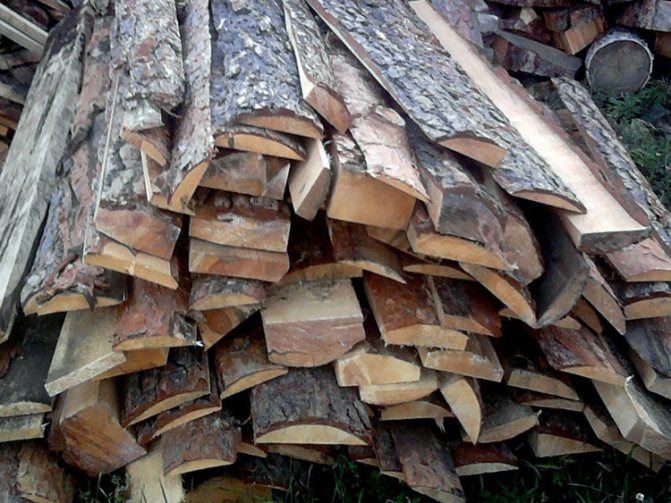

Fence croaker
It is best to buy sorted croaker. It costs a little more than usual, but the slats will have almost the same width (the fence will look better), and the amount of waste will be minimal.
It is important not to confuse ordinary scraps with a block house - expensive (it costs about 10 times more), high-quality and calibrated slab, intended for wall decoration in order to imitate a log house.
Plastic fencing
It is a strong, relatively durable, affordable and extremely easy to install fence construction tool. It is used by summer residents who do not want to waste time and money on creating special bells and whistles.
A photo of a cheap fence in the country is shown below.
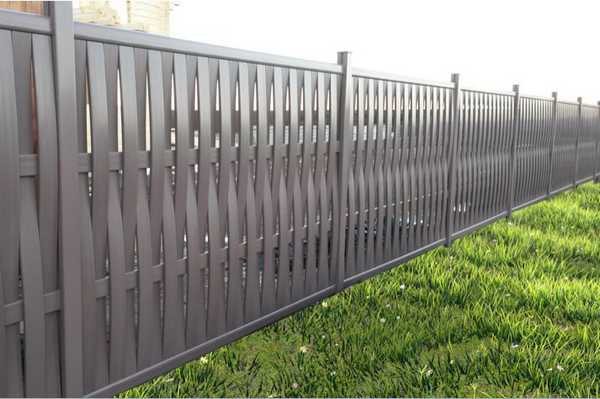

Pattern of a country fence made of plastic in the form of a braid
Features of the
This cheap fence is lighter than wood and corrugated board, a type of fence whose main advantage is environmental friendliness. A picket fence, a blind classic fence, a lattice and an imitation of a wicker fence are now made of plastic. You can choose from different options, it all depends on the existing need.
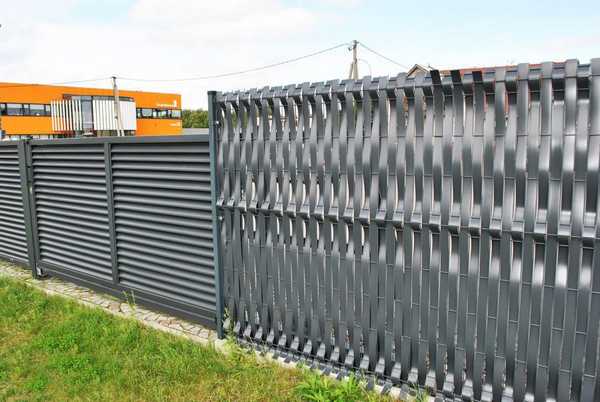

The advantages of such barriers are the ease of assembly and replacement of damaged parts.
Installation of a fence
The assembly and installation of a cheap fence depends on the type of material purchased and differs little from standard processes. The picket fence is assembled in the same way as a wooden one, the net is stretched like a chain-link, if a cheap prefabricated decorative structure is purchased, the instructions from the manufacturer are used.
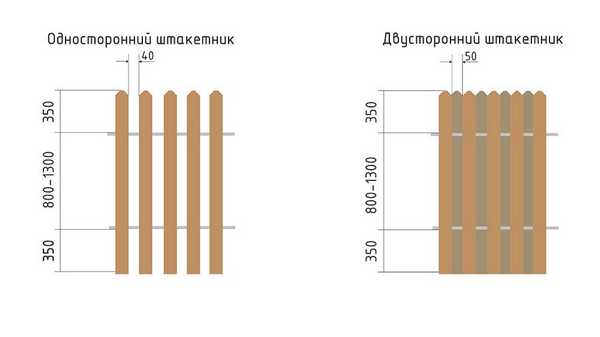

Layout of transverse lags, depending on the type of installation of pickets
Metal and forged fence
Probably everyone imagines what a forged fence looks like: graceful patterns of curls and other elements, vines, rosettes and a row of peaks on top. In the same way, everyone quite clearly understands the cost of such a fence: not everyone will be able to afford it.
But along with real forging, today a much cheaper analogue exists and is actively used - stamped forging, also called cold forging.
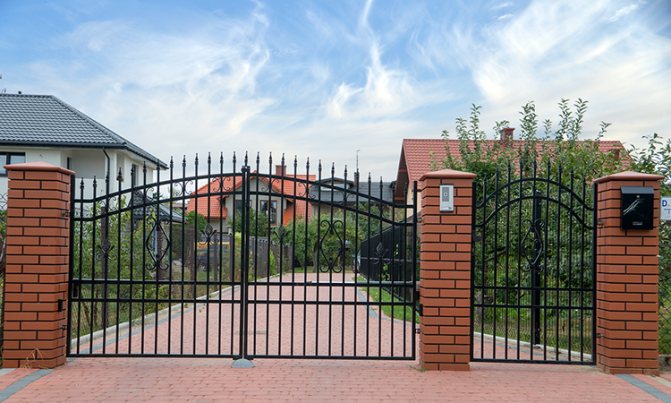

Metal fence
For cold forging, a rod or plate is taken, and the desired shape is given not by hammer blows, but by bending or twisting on a special machine. When drawing up the canvas, the parts are connected in the simplest way - using electric welding. Thus, a forged fence becomes available not only for purchase, but also for self-production.
It is not scary if there is no access to cold forging machines or only a few of them are available: you can buy such parts in workshops or online stores - even so, they will not cost much.
Did you know that forged fences can be cold and hot forged? Read about it on our website.
For options for making wooden fences, see this topic. Picket fence, slab, board and other materials for the construction of wooden fences.
Summarize
We can safely say that the formula “demand creates supply” in the market of building materials for the construction of fences has today been supplemented by a variation in the form of the tendency “supply creates demand”.
You will probably be interested in reading about how to build a toilet, a cellar, a veranda, a bathhouse, as well as how to make a garden swing, a pergola, a bench, a stone brazier, a polycarbonate gazebo with your own hands.
The latest materials appear on the market that consumers did not even know about. And we are talking here not only about revolutionary plastic materials, previously simply unthinkable. The wood used for centuries is today processed so well that in terms of its durability it can give odds to many traditionally durable materials.
The metal is coated with zinc, aluminum or polymers so soundly that it can stand in the rains and winds for fifty years without any corrosion.
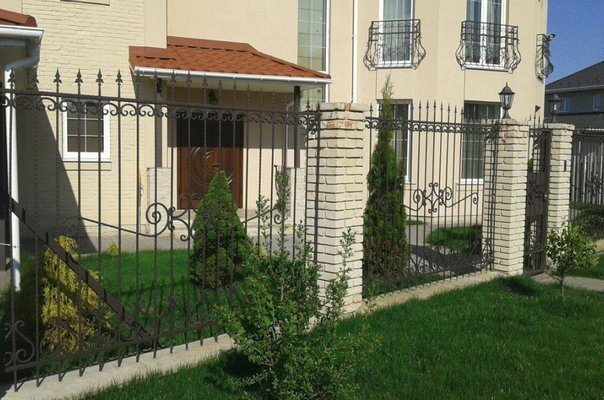

Today there is a number of "brick" brothers, which differ from each other not only externally, not only in their composition, affecting resistance to moisture, wind and frost, but also in the scientifically developed arrangement of voids inside themselves.
In general, today's market of building materials for the construction of fences is able not only to satisfy any needs of the buyer, but also to offer him such a product that exceeds all his wildest expectations.
From corrugated board
As earlier, slate was often used to make a solid fence, today a more modern roofing material is used for the same purpose - corrugated board.
It is much more durable, since, firstly, it is made of steel, and secondly, it has a double protective coating: zinc and polymer.
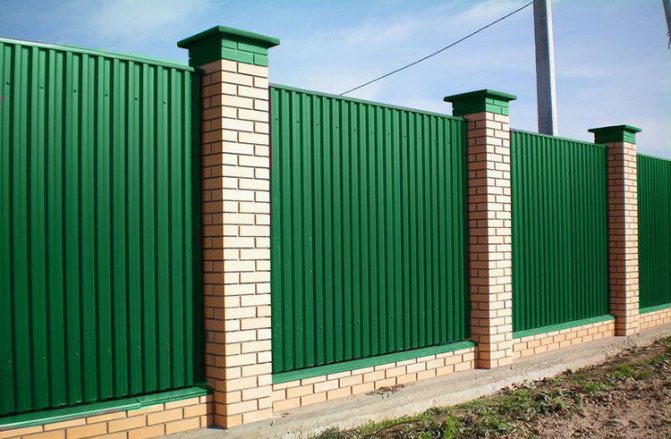

Fence from a profiled sheet
The polymer sheath can have any color, so the corrugated board fence always looks bright and attractive.
Video description
An example of fences from other materials in the video:
Another type of wooden horizontal fence is block house fencing... This type of cladding panel is thick enough to withstand severe mechanical stress. And the decorative properties of the panels fit perfectly into the rural landscape, especially if the house is built of rounded logs, faced with a block house or siding with a similar profile.
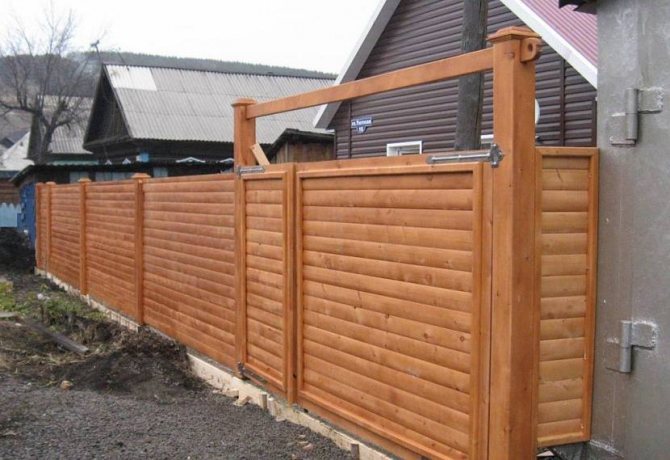

Block house, one of the most unusual finishing materials, also looks great as a fence Source
Of course, this is not the cheapest fence - according to this characteristic, the block house does not lag behind most types of planed sawn timber fences.
Brick fence
This fence is not only invisible, but also the most durable and reliable. But it also costs more than others, and besides, it will need a foundation.
If the brick is not supposed to be covered with a waterproof finish, you should choose a brand with as much frost resistance as possible (as far as money is available). A special facing brick looks most impressive.
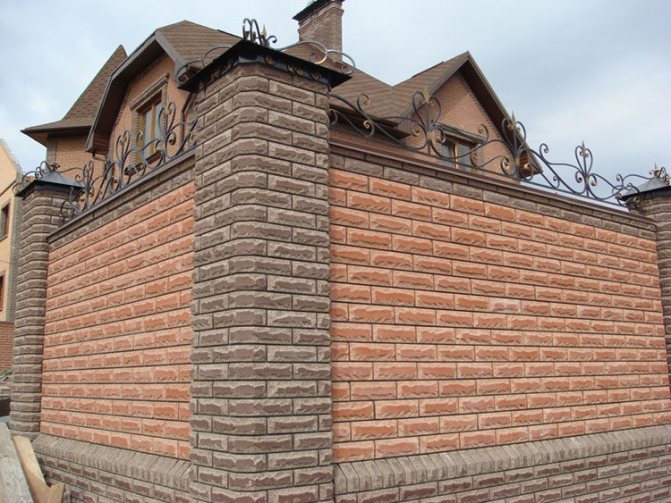

Brick fence
Instead of bricks, you can use untreated pieces of natural stone - granite or rubble (limestone, sandstone, dolomite). Such material is cheaper than brick, but it is more difficult to lay it.
Use of ornamental plants
In recent years, fences made of vegetation have become part of the group of classic details for decorating a private plot. Thuja is universal, it has long become the basis of a hedge: the fence from it turns out to be thick, takes up little space and does not torment the homeowner with frequent haircuts. A significant disadvantage is that this type of fence looks boring, especially if it surrounds the land plot around the entire perimeter.
In gardening associations, fruit and berry plantations play the role of natural fences.
Metal
Fences made of metal parts are strong and stable. They are made of steel or cast iron. There are several types of construction:
- forged;
- mesh;
- welded.
Forged Welded Mesh
The most expensive fences are forged. But besides this, metal structures look aesthetically pleasing and serve for a long time. The fence is easily and quickly assembled, thanks to the finished design of the spans, which it is enough to attach to the erected supports. Such a fence will look more elegant if combined with materials such as:
- a rock;
- brick;
- wood.
It is recommended to buy metal sheets for the fence directly from the manufacturer, where you can order a unique option that none of your neighbors or acquaintances will have. But if this is not possible, then you can construct a fence from parts purchased in the store.
Wood
Wooden fences still have not lost their popularity. Like a few tens, or even hundreds of years ago, wooden pickets are still in trend. Such fences create the flavor of the courtyard. Today, such fences are made of boards, which are interconnected with the help of special structures. It should be noted that the fence will be of high quality only if strong and high-quality wood is used.
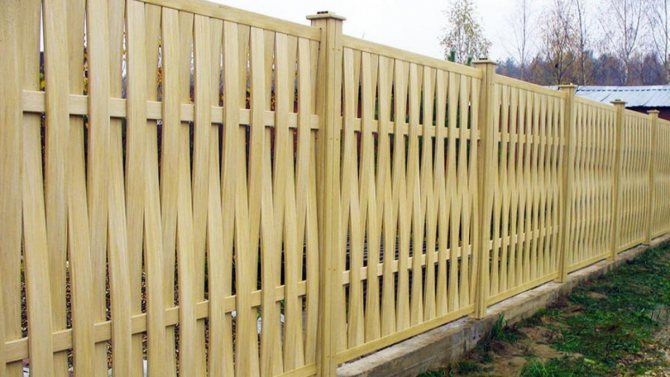

A wooden fence provides an opportunity for the most daring design solutions
These hedges have their own advantages:
- easy to design;
- ecologicaly clean;
- looks good with any other material;
- protects against natural disasters, extraneous noise and intrusions into the territory.
There are also disadvantages:
- it is worth using additional protective coatings to protect the wood from the effects of pests, rain and sunlight;
- suffers from weather changes and temperature extremes;
- unstable during a fire;
- exposed to mechanical stress;
- serves no more than 3 - 4 years.
There are several types of wooden fence:
- Picket fence - created using thin slats attached to the rungs.
- Wicker - this fence is made by weaving thin branches from a hazel or willow bush. It has a decorative look and can be easily repaired as needed.
- Wooden panels. They are prepared from slats that are connected by a lumber frame.

